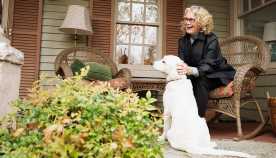AARP Eye Center
- right_container
- Health
- Money
- Work & Jobs
- Social Security
- Medicare
- Caregiving
- Games
- Travel
- More...
- Entertainment & Style
- Family & Relationships
- Personal Tech
- Home & Living
- Auto
- Staying Sharp
- Podcasts
- Videos
Tomaquag Museum
Tomaquag Museum’s Mission Statement:
The Mission of Tomaquag Museum is to educate the public and promote thoughtful dialogue regarding Indigenous history, culture, arts, and Mother Earth and connect to Native issues of today.
Tomaquag Museum’s Vision Statement:
Tomaquag Museum envisions its future as an Indigenous Cultural Education destination that engages visitors in thoughtful dialogue that promotes understanding and strives to create experiences that transform people's lives by broadening their perspectives, attitudes, and knowledge of Indigenous Cultures and the interrelationship with the wider world.
HISTORY OF THE TOMAQUAG MUSEUM
Tomaquag Museum was first founded as the Tomaquag Indian Memorial Museum by archaeologist Eva Butler and Narragansett/Pokanoket Wampanoag historian and educator Mary E. Glasko, also known as Princess Red Wing of the Seven Crescents, first opening in 1958 in Tomaquag Valley, a hamlet in Ashaway Rhode Island.
After the passing of Eva Butler in 1969, Tomaquag Museum relocated to Exeter RI, adjacent to the renowned Dovecrest Restaurant. Partnering with the restaurant on events and thanksgiving celebrations in the 70s and 80s, Princess Red Wing continued to assist the operations of the museum in addition to advocating for indigenous people of New England. During this time, the Museum undertook its first big projects for the development and management of collections and archives in an effort to better organize the museum and expand exhibits.
In 1984, the Dovecrest property was sold, leaving the museum in the old farmhouse on the property. Though Tomaquag struggled for a few years searching for a new home, programming continued. In 1997, Dawn Dove purchased the old Dovecrest property again, and Tomaquag returned to its previous site. The Board reorganized and began programming for schools and organizations. Upon receiving a 501(c)(3) tax exemption as a non-profit, the museum relocated into its current location.
Despite intermittent, project-based funding, the Board was inspired to implement more museum programming through increased group and school tours and cultural events. Lorén Spears became the Executive Director in 2003 and continued growing the organization, even establishing a school onsite for Native American children, known as the Nuweetooun School which unfortunately had to close in 2010 due to severe flooding damage. A generous grant from the Rhode Island State Council on the Arts (RISCA) supported new exhibits, and funding from the Champlin Foundation furnished archival equipment in 2005. Between 2003 and 2010, Paulla Dove Jennings, curator, and Kate April, archivist, worked gratis writing grants, consolidating collections, and curating exhibits. Their efforts served as the backbone of Tomaquag’s growth and development.
In 2016, Tomaquag was awarded the National Medal for Museum and Library Service, the nation's highest honor given to museums and libraries to service in the community. For 22 years, the award has celebrated institutions that respond to societal needs in innovative ways, making a difference for individuals, families, and their communities. Tomaquag is honored to have received this exceptional distinction and looks forward to continuing the important work of elevating indigenous voices and stories.
AARP Events for Exeter
-
Featured Event
Achieving the Six Harmonies of Tai Chi/Qigong
Tuesday, Feb 18, 2025 at 4:00 p.m. ET
Zoom
Online Event
-
Featured Event
Cooking Class: Fish & Shrimp Stew with Okra
Thursday, Feb 20, 2025 at 4:00 p.m. ET
Zoom
Online Event
-
Featured Event
Achieving the Six Harmonies of Tai Chi/Qigong
Tuesday, Feb 25, 2025 at 4:00 p.m. ET
Zoom
Online Event

with Automatic Renewal
- Immediate access to your member benefits
- Discounts on travel and everyday savings
- Subscription to AARP The Magazine
- FREE second membership

























































